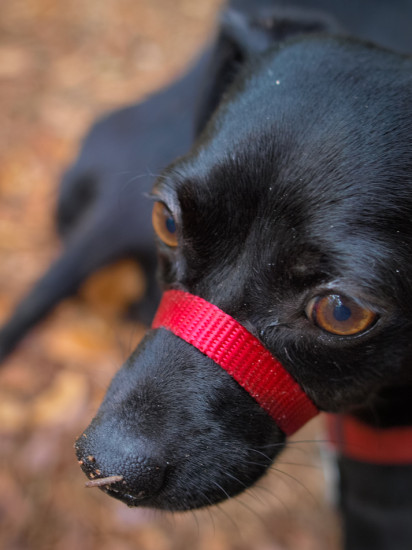 He’s not particularly excited about his new training leader.
He’s not particularly excited about his new training leader.
I found a Diamondback terrapin, Malaclemys terrapin, outside of my apartment in May. Well… Amos really found her, but I made the catch and provided the identification.
She was likely gravid and was setting out to lay her eggs outside of the salt marsh adjacent to my apartment. While I prepared my camera, I placed her on the patio with Rocky, my Eastern Box Turtle, who promptly mounted the terrapin…
About a year ago, I noticed Amos frequently and obsessively scratching himself, and, after some searching, I discovered a single flea. I promptly treated him, but often felt something crawling on my legs and arms in my bed when I went to sleep. I would usually panic a bit – oh no! fleas in my bed! – but invariably, I would find that the insect responsible for disturbing a few leg hairs were Dermestid beetles. Beetles in this family are frequently used to strip flesh from carcasses and clean bone and are not known to be harmful or even bite.
I couldn’t figure out where they came from, but I was glad they weren’t fleas. The problem disappeared shortly after I started noticing them, but recently returned. I was still without an answer to the beetles’ origins, until yesterday. I moved an ottoman away from my bed, and discovered this milk bone, covered in holes and the little dermestid beetles running out of them. Amos is a peculiar dog: he will often hide his treats, rather than promptly eating them, and apparently, he forgot about this one.
Without a microscope but with Google Image Search, I managed to tentatively identify the beetles as Lasioderma serricorne, cigarette beetles, which are Anobiids, not Dermestids (the ‘furriness’ suggested to me that they were dermestids at first). In any case, I’ll be sure Amos isn’t allowed to hide his treats any longer.
Amos and I discovered an Eastern Cicada Killer (Sphecius speciosus) female attempting to carry away her prey this weekend outside of my apartment in Savannah, GA. Cicada Killers are solitary wasp parasitoids that sting prey, paralyzing it, and drag it to pre-made burrows, where they will lay an egg on the incapacitated prey item for their larvae’s consumption. This seems absolutely terrifying, especially given that this wasp is a couple of inches long…
The wasp seemed to have taken a cicada that was a bit too large for it; it was struggling to carry it off, and eventually left the paralyzed cicada, possibly because of the dual harassment from my photographing and Amos’s barking.